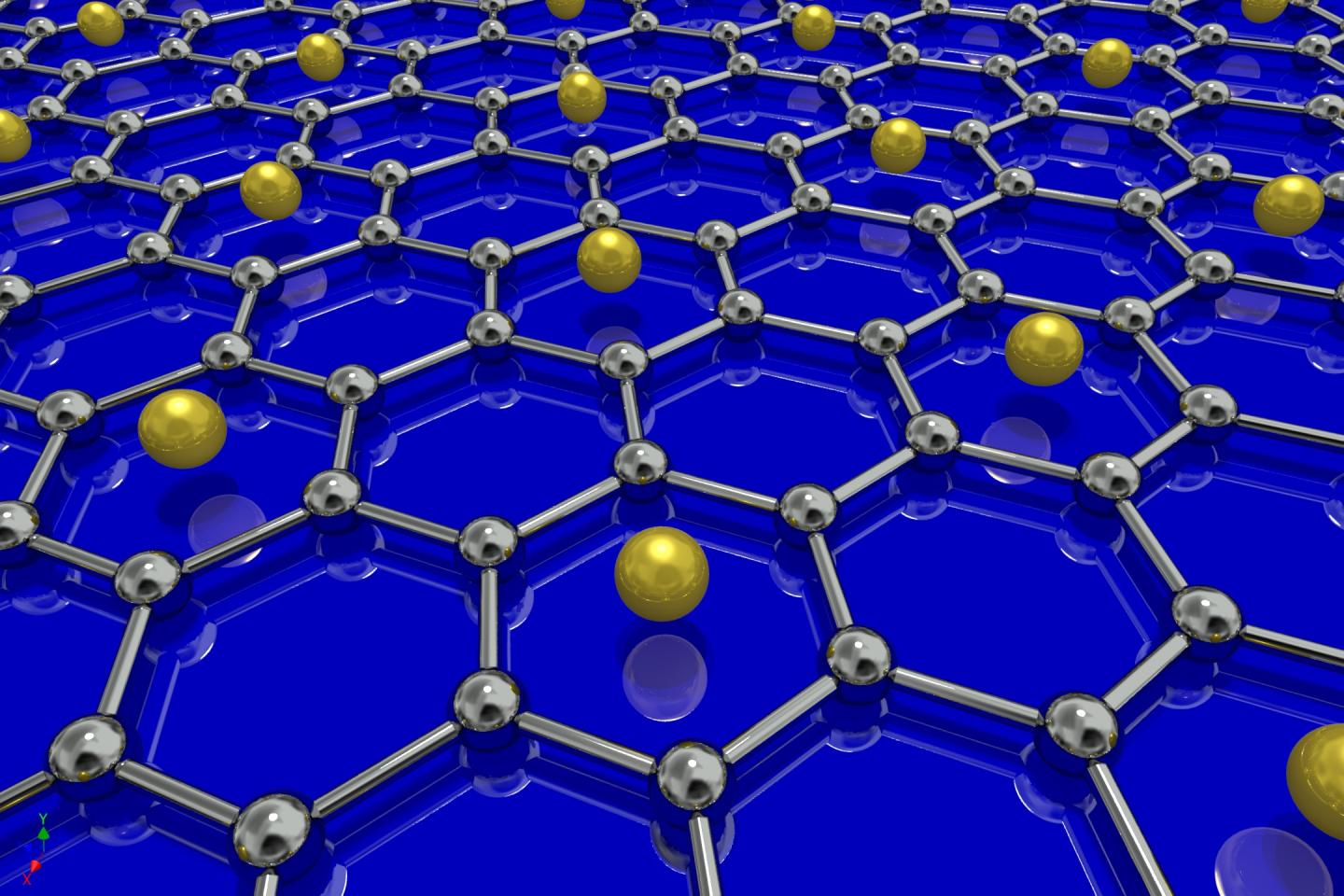First superconducting graphene created
September 9, 2015

University of British Columbia physicists have created the first superconducting graphene sample by coating it with lithium atoms (yellow), shown in this illustration (credit: University of British Columbia)
University of British Columbia (UBC) physicists have created the first single-layer superconducting graphene sample by coating it with lithium atoms.
Although superconductivity has already been observed in layered bulk graphite, inducing superconductivity in single-layer graphene has until now eluded scientists.
“This first experimental realization of superconductivity in graphene promises to usher us in a new era of graphene electronics and nanoscale quantum devices,” says Andrea Damascelli, director of UBC’s Quantum Matter Institute and leading scientist of the Proceedings of the National Academy of Sciences study outlining the discovery. A superconductive wire would have zero resistance at ultra-low temperatures (at a critical temperature* of about 5.9K), so a current flowing through it would generate no heat.
Given the massive scientific and technological interest, the ability to induce superconductivity in single-layer graphene promises to have significant cross-disciplinary impacts, the researchers say.
To achieve this breakthrough, the researchers, which include colleagues at the Max Planck Institute for Solid State Research, prepared the lithium-decorated graphene in ultra-high vacuum conditions.
Scientists eventually hope to make very fast transistors, semiconductors, sensors, and transparent electrodes using graphene, a single layer of carbon atoms arranged in a honeycomb pattern.
* The temperature below which superconductivity appears.
UPDATE Sept. 14, 2015: critical temperature added.
Abstract of Evidence for superconductivity in Li-decorated monolayer graphene
Monolayer graphene exhibits many spectacular electronic properties, with superconductivity being arguably the most notable exception. It was theoretically proposed that superconductivity might be induced by enhancing the electron–phonon coupling through the decoration of graphene with an alkali adatom superlattice [Profeta G, Calandra M, Mauri F (2012) Nat Phys 8(2):131–134]. Although experiments have shown an adatom-induced enhancement of the electron–phonon coupling, superconductivity has never been observed. Using angle-resolved photoemission spectroscopy (ARPES), we show that lithium deposited on graphene at low temperature strongly modifies the phonon density of states, leading to an enhancement of the electron–phonon coupling of up to λ≃0.58. On part of the graphene-derived π∗-band Fermi surface, we then observe the opening of a Δ≃0.9-meV temperature-dependent pairing gap. This result suggests for the first time, to our knowledge, that Li-decorated monolayer graphene is indeed superconducting, with Tc≃5.9 K.